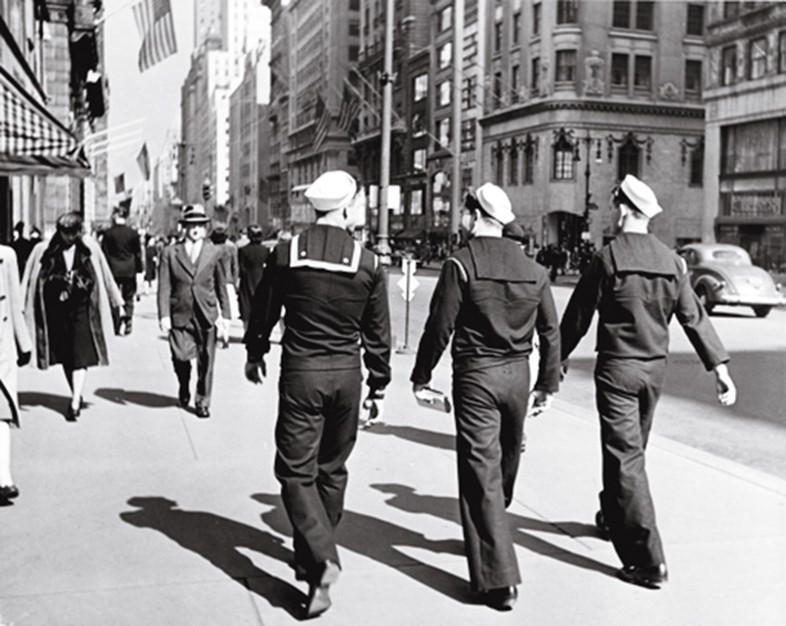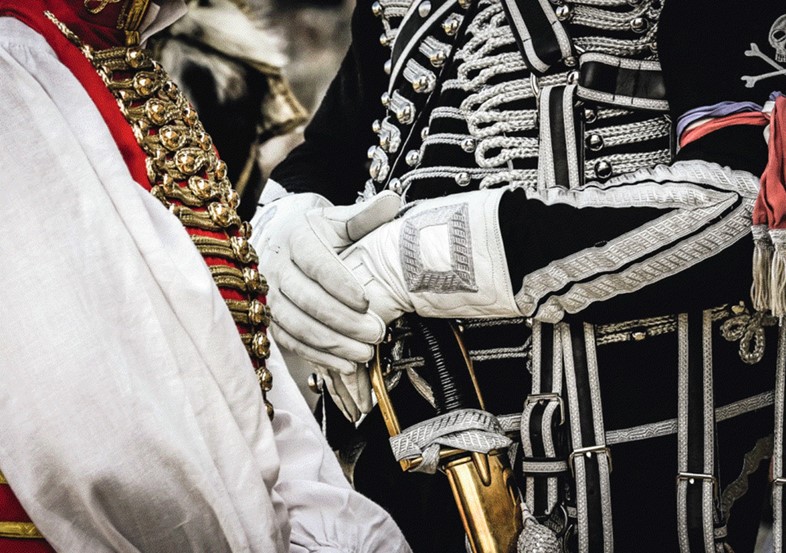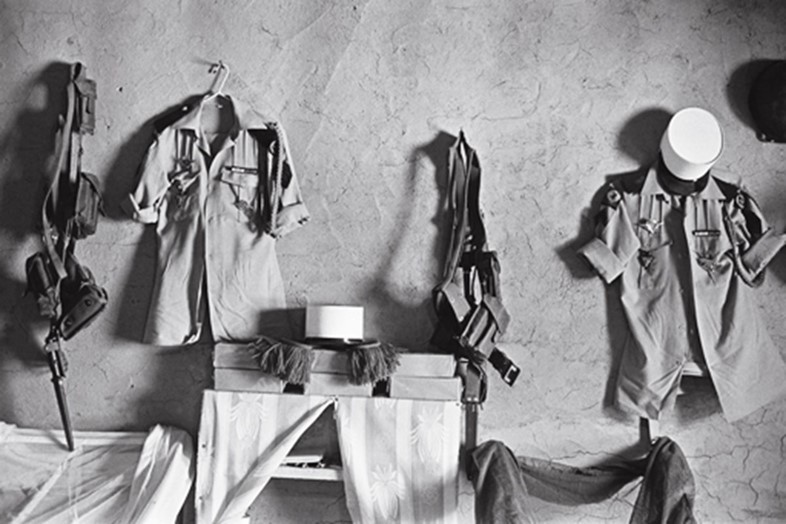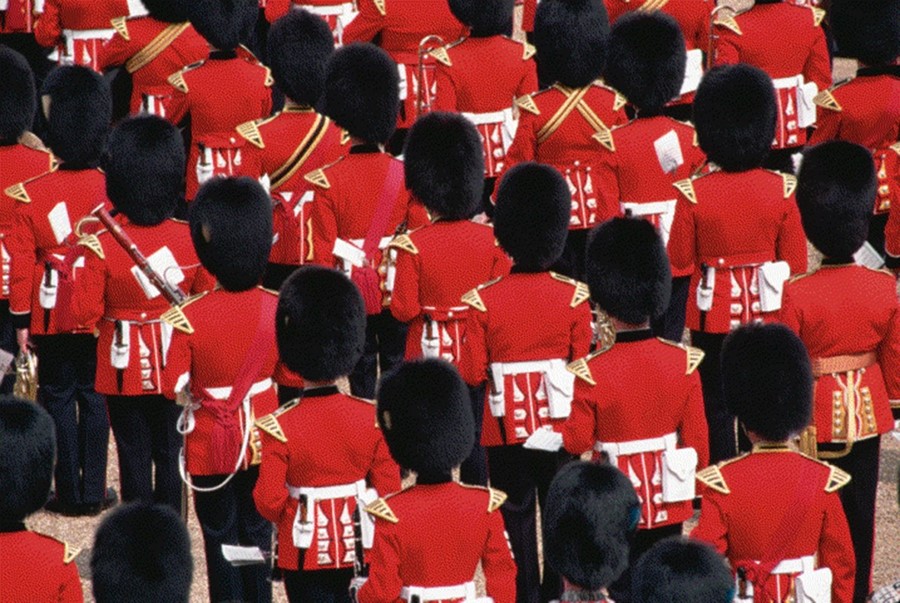From Thomas Burberry's iconic trench coat to the omnipresence of the Bréton jumper, we consider some of the most prolific military tropes present in fashion today
The history of the interdependent relationship between military uniform and fashion is a long and storied one, spanning centuries of warfare. It’s perhaps natural fit – only in these seemingly antithetical industries is ceremony so celebrated, while the politicisation and subversion of army garments has made them a firm favourite among fashion sets.
Take the Thomas Burberry-designed trench coat, for example; it was made standard wear for British officers in 1914, rose to iconic status when worn by Humphrey Bogart in the 1942 classic Casablanca, and has had an unshakeable presence in the realms of outerwear ever since. It is one of endless examples; on the other side of the coin are Vivienne Westwood’s 1970s punks, who overturned the traditional use of Nazi symbolism, aviator jackets and army-issue white T-shirts. This autumn, Phaidon celebrates the prevalence of military signatures throughout the fashion industry with a new book entitled Military Style Invades Fashion. From dazzle ships and the French Foreign legion, to Eastern traditions and the notoriety of leather, it makes for a fascinating read. Here, we select some of our favourite examples.

Nautical Stripes
The Bréton jumper, or marinière, might be one of fashion’s most omnipotent pieces, riding on the coattails of the black leather biker jacket. First introduced to the naval uniform of French seamen based in Brittany in 1858, its original design was manufactured in wool and cotton, and featured 21 horizontal stripes – one for each of Napoleon’s historic victories.
It resurfaced in popular consciousness with Coco Chanel’s renewed focus on nautical themes in the late 1910s, after the designer spent a season holidaying on the French coast, and was reborn yet again with the Beatnik movement in the 1950s and 60s. Who can forget it slung casually over the shoulders of Jane Birkin? Nautical inspiration does not begin and end with the Bréton, however; it seeps inconspicuously into our undying love of the colour navy, and the sweet square collars of well-dressed Bonpoint babies – military style for the every(wo)man.

Decoration
From flamboyant golden tassels and elaborate embroidered fringing to the ornate hardware of medals won in battle and regal embossed buttons, the decoration applied liberally to military uniform is among the most desirable of any in fashion – and thus, is frequently adopted to be worn for less noble pursuits. It is easy to forget, however, that many of these flourishes were, in their first incarnation at least, entirely practical. “The original purpose of the iconic gilt gold braiding of old tunics – known as ‘frogging’ – was to give the chest and shoulders additional protection from the swipe of a sword blade,” the book reminds us, for example. “As it appeared on fur-lined hussar jackets, first worn by cavalry soldiers in the Black Army led by the Hungarian King Matthias Corvinas in the early 15th century, it had evolved its own symbolism: the frogging echoed the shape of the ribs, turning the solders into living skeletons in order to intimidate the enemy.”
Likewise, spherical metal buttons could, in a worst case scenario, be used in the place of bullets to be fired from a musket, and on the less believable end of the scale, plumes of feathers and horsehair used to intimidate the enemy. Such elements have been endlessly reproduced in centuries since, from the catwalks of Balmain and Alexander McQueen, where military flourishes frequently recur, to the now iconic cover artwork of The Beatles’ Sgt. Pepper's Lonely Hearts Club Band, in which they each wear a satin hussar jacket in a vivid tone – perhaps its most memorable incarnation yet.

Camouflage
Few inventions were as revolutionary to military uniform as that of camouflage, which first cropped up in the mid-18th century when it was used by rifle units in the army to make them indistinguishable from the environments they were hiding in. In the years which have followed, it has transformed endlessly, adapting to the desert, the forest and the jungle among many other environs. The colour of khaki is especially fascinating – emerging from a desire for universality among soldiers. “In the 1840s, soldiers in the Indian Army – British and native soldiers serving under British officers – began to wear drab-coloured clothes to standardize variations in the uniforms of native troops from different regions,” the book explains. “Soldiers are said to have used tea, curry powder and mud to dye their clothes the same colour, which was known as khaki, from the Urdu word meaning 'dust'.”
Happily for those beyond the reach of the military, the rich symbolism of khaki and camouflage, and their close ties to the history of warfare, makes them an ideal tool for subversion, too, and as such both have long been a uniform of choice for youth gangs and supporters of political movements. “In the 1960s English mods appropriated the green army parka,” the book explains, “while US hippies adopted khaki or camouflage drill jackets and US Navy bell-bottoms to denounce the Vietnam War (it didn’t hurt that military surplus was usually cheap).”
In fashion, such references are more overt: take John Galliano’s silk camouflage evening gown for Christian Dior in 2001, a year in which news coverage was dominated by coverage of the September 11 terror attacks and ensuing reports from the war in Afghanistan. Day to day, it's best represented when far removed from its neat, orderly origins: unbuttoned and oversized, it becomes a call to revolutionary action rather than a reactionary nostalgia. The ultimate irony being, of course, that by wearing this pattern intended to facilitate invisibility with one’s surroundings, one invariably stands out.

Military Style invades Fashion by Timothy Godbold, with an introduction by Colin McDowell, is out now, published by Phaidon.
